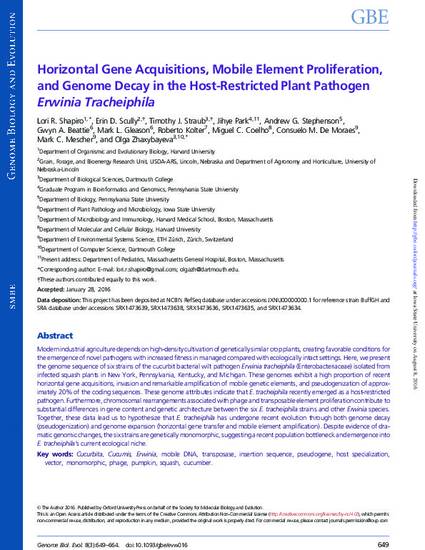
Modern industrial agriculture depends on high-density cultivation of genetically similar crop plants, creating favorable conditions for the emergence of novel pathogens with increased fitness in managed compared with ecologically intact settings. Here, we present the genome sequence of six strains of the cucurbit bacterial wilt pathogen Erwinia tracheiphila (Enterobacteriaceae) isolated from infected squash plants in New York, Pennsylvania, Kentucky, and Michigan. These genomes exhibit a high proportion of recent horizontal gene acquisitions, invasion and remarkable amplification of mobile genetic elements, and pseudogenization of approximately 20% of the coding sequences. These genome attributes indicate that E. tracheiphila recently emerged as a host-restricted pathogen. Furthermore, chromosomal rearrangements associated with phage and transposable element proliferation contribute to substantial differences in gene content and genetic architecture between the six E. tracheiphila strains and other Erwinia species. Together, these data lead us to hypothesize that E. tracheiphila has undergone recent evolution through both genome decay (pseudogenization) and genome expansion (horizontal gene transfer and mobile element amplification). Despite evidence of dramatic genomic changes, the six strains are genetically monomorphic, suggesting a recent population bottleneck and emergence into E. tracheiphila’s current ecological niche.
Available at: http://works.bepress.com/gwyn-beattie/16/

This article is from Genome Biology and Evolution 8 (2016): 649, doi: 10.1093/gbe/evw016.